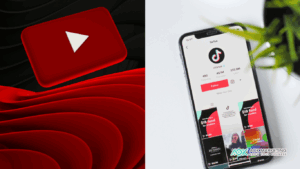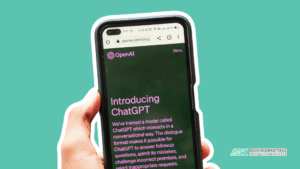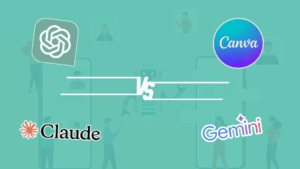Paid, Owned and Earned
The goal of any online presence should be to engage customers, drive traffic and ultimately generate sales. One of the key concepts to keep in mind is whether the media you’re working on is Paid, Owned or Earned.
Lets start off with some basic definitions:
Paid – This is what a brand pays to leverage a channel. For example: Google AdWords for Google, Promoted Tweets on Twitter, Promoted Facebook Updates, etc…
Owned – This is a channel or platform you control. The best example is your website / blog.
Earned – Traffic you obtain by building an audience, being recognized as an authority, and rising in the rankings on Google.
Let’s look at the role each one plays in your online presence.
Paid – If your site is not well known, this can be the catalyst that shifts you into generating earned media.
Owned – Should be the central hub, the foundation that builds long term relationships with existing and potential customers.
Earned – Most credible of the three, and provides a key role in the sales environment.
Lets look at the benefits and challenges of each.
Paid – You can scale, you can turn on and off, and you can control the message. Downside: There is a lot of clutter, with rising costs and falling response rates.
Owned – You have great control, niche targeting ability, longevity, and cost efficiency. However it takes time to scale, there are no guarantees, and not everyone trusts company communications.
Earned – This is the most credible channel, however it can be hard to scale, hard to measure ROI and you have no control over the audience.
So Where Should You Focus?
There is no one set answer to this question. Everyone’s situation is different.
The first thing you need to do is figure out your target market (using personas is a great way to segment messaging), and what your unique selling proposition is. If you’ve figured out who you are targeting, and what messaging you’re going to use, take a close look at your competitors and what they are doing on the different media channels. Are they on Twitter? Do they primarily focus on email and print catalog distribution? Are they well ranked organically and do they spend a lot of money on AdWords?
Once you have done some competitive research this will tell you where your competitors are, and aren’t, making an impact. You should be able to identify opportunities to fill the gap, and to see what kind of content they are promoting that generates lots of engagement.
Lets take a couple of fictional examples, and see where they should focus to drive traffic and build an audience.
Larry Longtime
Larry’s company, Longtime, has been around in the industry forever. They are a decent sized player, and always had a good presence in the market. Their website is well established, shows up everywhere in search, and appears to have a decent PPC budget on Google (Paid). Where should he focus?
Given the very brief summary, Longtime has a good ‘Owned’ asset in their website, but they may not have much of a presence outside the industry. Careful evaluation of their Paid and Earned traffic and results should be undertaken to see where there are holes. Do they actually spend much on AdWords? Is their traffic in Analytics primarily focused on their own name as the primary search term? What kind of communities are they a part of? Do they have much of a following on any social networks? With a large market presence it’s easier to get Earned media through Paid support of the various channels. So Larry should focus on Paid and Earned.
Susan Swift
Susan is a relative newcomer to the industry, but she’s what you would call a very early adopter. She’s on every social network there is the day it’s launched, and her mobile device is always on and attached to her 24/7. She has a large following on several social networks, and Tweets, Posts, and replies on a constant basis. Where should she focus?
Susan has great ‘Earned’ assets in the various social networks, but what’s the state of her Owned assets? Does she have a brand presence outside of her personal profiles? What is the state of her website? Is it a resource for prospects or is it an online brochure? What is her organic profile on Google? Is she even in the first 10 pages for relevant keyword searches?
Susan needs to get her own house in order, and start using her current following as a launching point of her Owned platform, the company website. Once she has that established, she can drive traffic to it and use her hard work and loyal followers to benefit her own business, rather than the sites she’s always on. So Susan should start with Owned, and move to Paid if her efforts to move her followers doesn’t work out.
Patrick van Paysalot
Patrick has been around for a while, but just doesn’t see the value in spending the time on social networks, or collecting emails, or even updating his site much. He’s got a site, it works just fine, and he’s able to drive tons of traffic to it using various ‘Paid’ avenues, primarily Google AdWords and Bing Advertising. He’s able to drive traffic to seasonal offers, but every now and then pauses his campaigns for holidays or budgetary reasons, and his traffic drops off to literally nothing.
Patrick has Paid advertising down to a science, but he’s always going to be investing in that traffic effort due to the lack of support on his old website (Owned) and non-existent social and other marketing efforts (Earned). This strategy will work so long as you can keep up with the trends and changes, but he’s noticed over time his cost per lead continues to rise. He needs to fix up his site, bring it up to date, and start engaging his customers online. He desperately needs to work on his Owned and Earned strategy to get off the Paid treadmill at some point.
Your Situation
You might find some commonalities with the fictional characters above, and if you do, you know you have some work to do to fix your strategy. Pick one thing at a time, but always start with your Owned asset. After all, it’s really the only thing you have full control over, and build it as a solid foundation for your business for years to come.
Happy Marketing!
Dave Burnett
About The Author
Marketing Team
The AOK Marketing Team is a diverse group of amazing individuals driven to help all of our clients succeed. Great people are everywhere, and we believe that people should control their workday, their work environment, and where they live. We have team members in 9 countries: United States, Canada, Egypt, Belgium, Ireland, Australia, India, Pakistan, and Hong Kong.
How can we help you?





